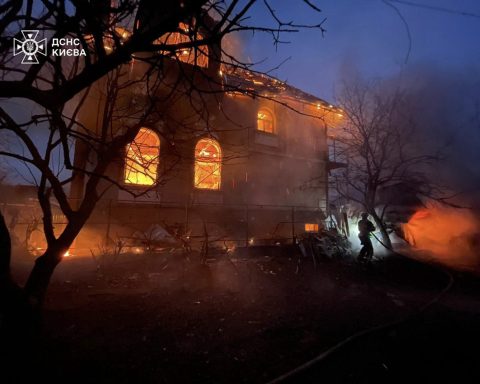Dr. Tomás Orduna commented that the cases with dengue without symptoms are people who have the infection but they don’t know they have it.
LThe existence of asymptomatic cases was highlighted from a scientific study that was published in the journal Nature in 2013. It was done by researchers from the University of Oxford in the United Kingdom and the National Institutes of Health in the United States.
At that time, the researchers estimated that there were 390 million dengue infections per year, of which 96 million areThey only manifested with symptoms and different severity.
On the one hand, we know that there are asymptomatic cases in the world. On the other hand, we also know that having a second dengue infection with a different serotype it is one more weight in the balance towards the probability that the person will develop a serious case,” said Orduna.
To detect what has been the impact of a dengue Outbreak, Population studies are carried out to search for antibodies in blood banks.
“On an individual level, sometimes use the test for Igg antibodies to detect if a person had the dengue virus. But it can give false positives if the person had other viruses related to dengue. So, it can be difficult to know if you really had dengue,” said the expert.
Meanwhile, Marcelo Quipildor, an infectious disease doctor, pointed out that “it is true to have had a dengue infection, even in asymptomaticit can increase the risk of having a severe case if the person is reinfected with another serotype.
But he also recalled that there are cases in which “the person has dengue for the first time and develops a severe case”Quipildor said. The infection usually lasts 10 days and fever is the most common symptom.
The facts individuals at risk can also determine the severity of the disease and include, in addition to previous infection, age (under 5 and over 65 years), chronic diseases (bronchial asthma, immunosuppression, diabetes) and pregnant people.
Since 2009, at cases with symptoms are classified into three categories.
Before, there was talk of classic dengue and hemorrhagic dengue.
Some patients with dengue now then can be identified as “no warning sign”: “Patients without an alarm sign should remain at home, with good hydration and paracetamol, after having gone to the doctor’s office,” he said.
“Likewise, they must be attentive to whether the alarm signs appear to go back to a health service,” added the expert.
Another category are dengue patients with alarm sign: “These are patients who no longer have a fever, but have abdominal pain, signs of bleeding and liver pain. These patients must be admitted to monitor their evolution in the hospital”, commented Quipildor.
The The third category is severe dengue. He goes straight to intensive care at the hospital. These patients may have fluid accumulation in various organs, bleeding, and involvement in various organs. These frames can lead to hepatitis, nephritis, myocarditis, among others.
The results of the genomic sequencing of samples from patients with dengue in the country.
The studies were carried out by researchers from the National Institute of Viral Diseases (INEVH) “Dr. JI Maiztegui”/Anlis, in the city of Pergamino, province of Buenos Aires.
They reported that in all studied samples of patients with the dengue serotype 1, Genotype V was identified, that has historically circulated in Argentina.
In contrast, in all the samples studied from the serotype 2 of dengue, Genotype II-Cosmopolitan was detected.
This finding marks the introduction of this genotype in the country, since the one that had been detected until 2022 was el Genotype III -Southeast Asian-American. This genotype had already been previously reported in the region. (first in Peru, in 2019, and later in Brazil, in 2021).
With information from Infobae















